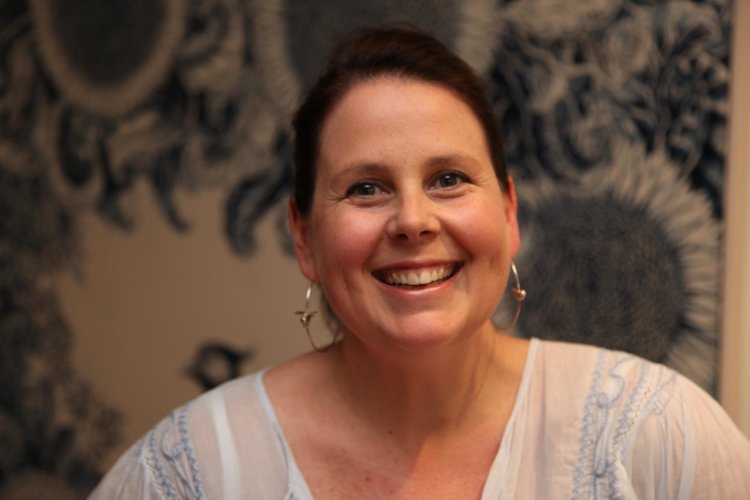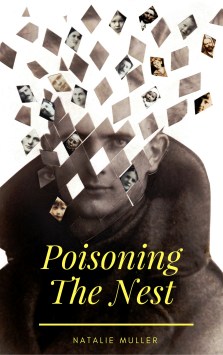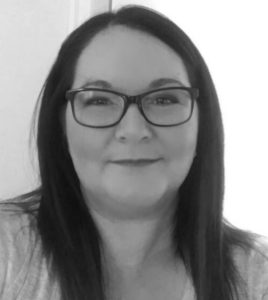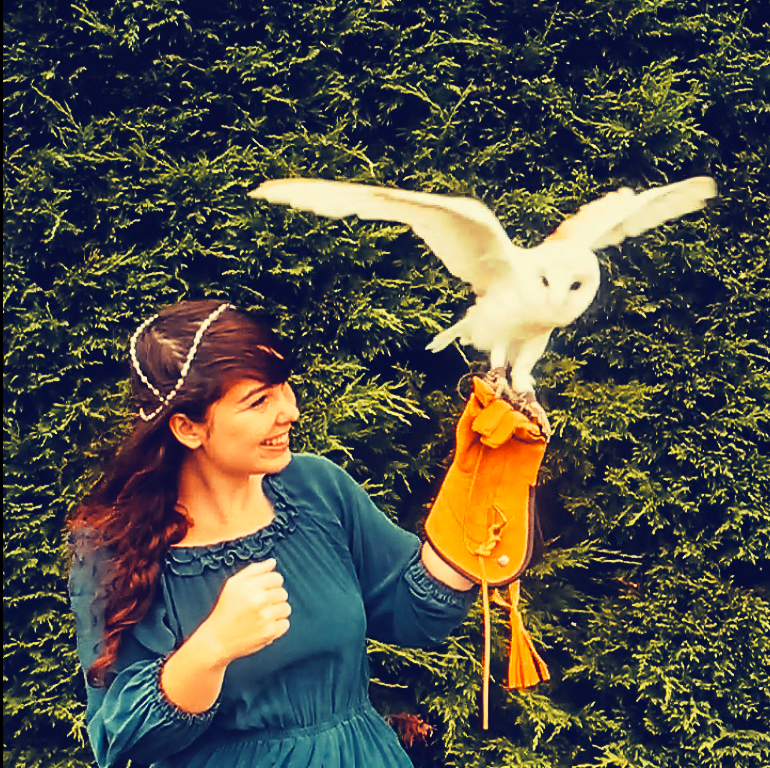Laura Theis is an award-winning musician and writer.
Her short stories, songs, radio plays, and poetry have been broadcast and published in the UK, Germany, and the U.S.
Her new work appears or is forthcoming in Strange Horizons, The London Reader, Manawaker Studio’s Flash Fiction Podcast, About Place Journal, Rise Up Review, Enchanted Conversations, Briars Lit and in print anthologies from Live Canon, Curtis Bausse, Allitera, and Three Drops Press.
Laura has gained a Distinction in the Mst Creative Writing at Oxford University (Keble College) as well as an MA in Theatre Studies, German and American Literature from LMU Munich. She is the recipient of the 2017 AM Heath Prize and the 2018 Short Story Prize by Curtis Bausse and has been shortlisted for the 2018 Yeovil Prize for Poetry,
the 2018 Live Canon International Poetry Award, and the 2018 Frome Festival Short Story Competition.
Find her online here: http://lauratheis.weebly.com/

I am LOVING reading Laura’s work, and listening to her beautiful music. I’m so thrilled that this blog series is giving me new discoveries and future favourites. I highly recommend exploring her work. And I hope you enjoy her answers!

Tell us a bit about your latest book.
What was the inspiration for the story?
I have two books out at the moment and they are both anthologies so I feel very excited about telling people about them and promoting them because my own writing makes up just a small part of them and I am honoured to have it published alongside so many other wonderful writers that I admire!
The first book is called Second Taste, it is an anthology of delicious (in every sense of the word!) short stories on the theme of nourishment published by Curtis Bausse. http://mybook.to/secondtaste
My own story is called “The Sad Tagine” and has been chosen as the winner of the 2018 Book A Break Short Story Prize. It’s the story of a daughter grieving her mother who had been a passionate cook and decides to try and apply for elite cookery school. The inspiration for that story was the idea of how grief can affect our senses in a very physical way.
The other book that I am excited about is the 2018 Live Canon Poetry Anthology.
http://www.livecanon.co.uk/publications
All the poems in this book have been selected by Liz Berry, one of my all-time favourite poets who was the judge for this year’s Live Canon International Poetry award. My poem is called “The Clockmaker’s Daughter” and also tells the story of a mother-daughter relationship, however, in this poem the mother is a student at a clock-making school and the daughter is the device she is furbishing in her workshop. My inspiration for the unusual setting was a very good friend who recently decided to quit his job, uproot his life and go back to university to learn how to become a watchmaker. And my inspiration for the title was the fact that when we hear a phrase like that we often automatically assume that this refers to a father, rather than a mother, so I wanted to subvert that expectation in the very first line.
Tell us about your main character.
Why should we fall in love with them?
The protagonist in “The Sad Tagine” starts out very lost and vulnerable, and very lonely. She has never learned to cook or inherited any recipes, and now it is too late to ask her mother (who had been a gifted cook) how to do it. She is working purely from memory, specifically the memory of certain scents. And still she has this childlike hopefulness about her. I think that’s what I love about her. She hopes that she can get into a very exclusive cookery school even though that is rather unlikely. She hopes she can find love even though she keeps having terrible experiences with online dating. She is on her own, moving through grief, and still never gives up.
What I love about the narrator of “The Clockmaker’s Daughter” is her ambiguity. Is she really a clock? Or a person? Or a hybrid, both at the same time? It’s up to the reader to interpret.
Have you always written, or is writing something you’ve come to in adulthood?
When I was 4 years old, I got a tape recorder with a little red microphone for my birthday and immediately started composing poems and inventing stories for an imaginary audience, and really I have been writing and performing ever since! This spring I graduated from the Oxford University Mst in Creative Writing which has helped me take myself more seriously as a writer and be less shy about telling people what I do, though I still often struggle with confidence.
What was your favourite book as a child?
I really, really loved the stories of Astrid Lindgren, I think they are so wonderful – especially Pipi Longstocking, such an amazing role model for how a girl can be (wild and impossibly strong and independent and self-sufficient and generous, with her own horse and pet monkey…) I’ve always secretly wished I could be more like her…And Astrid Lindgren’s sad books still make me cry without fail.
I also really loved the stories by Michael Ende, a German fantasy writer who wrote Momo and The Neverending Story, I’ve re-read them countless times.
Can you recommend another female author we should read?
I love this question! Yes yes yes! There are so many amazing women writing out there and I find it mindboggling that there is still such a gender divide, that male authors are so much more present in the media (there are lots of studies that show this is true year after year) and therefore I love recommending female authors. I know you asked for only one, but I hope you can forgive me if I list at least ten…
There are some women writers who also happen to be my favourite people such as Lucy Duggan (she is equally amazing at writing sprawling 600 page novels like her debut Tendrils and tiny one-or-two sentence flash fiction stories that are funny and poignant and really well-observed), or Daisy Johnson, the youngest person in history to be shortlisted for the Booker Prize with her debut Everything Under who also wrote a breathtakingly good short story collection called Fen. And Kiran Milwood Hargrave who writes amazing adventure stories with strong female leads. I also tell everyone I know to read Lucy Ayrton’s heartbreaking One More Chance and Sarvat Hasin’s beautiful This Wide Night.
Some exciting names to watch out for once they’ve published their debuts are Clare Coggins, Leonie Caldecott and Sophia Heyland.
I also love all the endlessly playful books by Ali Smith, Kelly Link (I think she’s my favourite short story writer!) Helen Oyeyemi, Laini Taylor, Carmen Maria Machado, Naomi Aldermann’s The Power and Eleanor Catton’s The Rehearsal.
Oh and last but not least Meg Rosoff, who is supposedly a YA author but I think her writing is for all ages…
My favourite German-language writer is the poet Mascha Kaléko and my favourite book about witches is Circe by Madeline Miller.
What was the last book you read and loved?
I have just finished Spinning Silver by Naomi Novik. I love fairy tale retellings, and this one is loosely based on Rumpelstiltskin, but she has completely made it her own. And right now I’m about to start My Year of Rest and Relaxation by Ottessa Moshfegh, the premise of it sounds very intriguing…
Do you have a favourite quote by a female author?
This one is framed by my writing desk:
“I am not at all in a humour for writing. I must write on until I am.” – Jane Austen
Tell us three fun facts about yourself, that other people might not know?
I grew up in Germany, in an area where all the streets and roads had names from mythology or fairy tales. On my way to school I would pass Snow White Road, Sleeping Beauty Road and so on, and even my school was named after the Tale of the Goose Girl.
My childhood house was on a road called “Asenweg”, which translates to “Æsir Way”. The Æsir are gods from Norse mythology. I’ve actually written a whole lovesong about that house: badasssnowhite.bandcamp.com
Which leads me to my second fact: I am also a singer and songwriter. I play solo music as well as in the Oxford-based duo Robot Swans and an experimental German duo called beißpony.
My third fact is that I am an animal lover. I have spent my whole life wishing for a puppy and now my childhood dreams have become a reality and I have a very cute 2-year old dog who is called Wodehouse after the writer PG Wodehouse. She is female, so the name often confuses people. You can follow us on Instagram @wodehouse_and_i
Do you have a favourite illustrator of children’s books? Why?
Freya Hartas. She has such an amazing style and I love her imagination and dark humour.
And my mum, Banu Theis-Baydur, because she has created really lovely books
in three different languages especially for her grandchildren.
What are the best and worst pieces of writing advice you’ve received?
I love this quote by Nick Cave:
“Ideas are timid things, in my experience. They come as whispers and you need to hold them in honest regard in order to receive them. Perhaps the idea is as scared as you. Perhaps the idea is as invisible as you may sometimes feel. It may be that the idea is simply mirroring your internal self and is reluctant to settle in a mind that is heavy with uncertainty, and that is repeating ancient mantras of self-doubt. These voices can best be banished by a spirited disobedience, a playful defiance. Disobey the voices by continuing to write. They are a lot less robust than they appear. The idea is closing in.”
Advice I don’t think is particularly helpful, at least to me, is when people tell you to gear your writing towards a specific market / audience. I especially love reading things that defy categorisation in regards to genre or the age group they are aimed at, and I don’t think it’s a writer’s duty to think about marketing in this way while they are writing. I try to ignore the question of “who is this aimed at?” and just write something I might like to read myself.
What is your favourite song by a female singer, and why?
I am going to cheat again and list more than one, I have so many favourites!
Two songs that immediately spring to mind are Ditte Elly’s Winter and Rosie Caldecott’s The Swell (though it’s impossible to pick just one, I love all their songs and Rosie has also just released her incredible Lost Gardens EP). I met both Ditte and Rosie at Catweazle, a magical Open Mic night in Oxford and am in love with their voices and their songwiting. Other songs that make me happy are Fiona Apple’s Paperbag (again, impossible to pick just one – she is the reason I started writing songs in the first place) Laura Marling’s Soothing, Regina Spektor’s the first two albums, Cat Power’s Covers Record, Kate Bush’s Wuthering Heights, Tori Amos’ Horses and the songs by Jenny Lewis, Bettye Swann, Alev Lenz and Scout Niblett.





























































You must be logged in to post a comment.